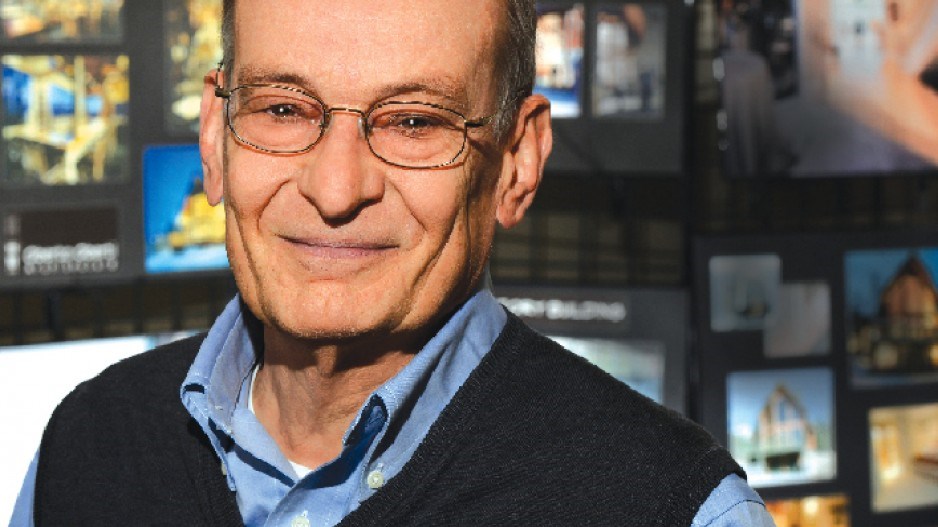If you want to get a rise out of Oberto Oberti Architecture + Urban Design owner Oberto Oberti, simply call him a developer.
“That’s not my profession,” Oberti told Business in Vancouver firmly.
“A developer is a guy who puts together the financing and manages the money side of the project. That’s not my specialty or the area where I take pride.”
Oberti has gained much media attention recently because he is the designer and the public face of the controversial Jumbo Glacier Resort, which the B.C. government approved last year.
He stressed that the project’s developer is the Glacier Resorts Ltd. consortium.
Nikken Canada Holding Ltd. originally sought to develop Jumbo, which is a year-round, 104 hectare ski resort in the Kootenays. But because the project has been mired in various approval stages for the past 22 years, the ownership consortium has evolved to include many investors.
Oberti’s first experience with a ski resort was in the 1990s, when he designed and helped create Kicking Horse Mountain Resort for developer Ballast Nadem. He is currently involved designing and being a spokesman for the proposed Valemount Glacier Resort, which is also being developed by a consortium.
“It’s crucial that I be known as a person who does design,” Oberti continued between sips of espresso coffee in his architecture firm’s boardroom.
His Italian accent is thick yet his words spill out fluently and rapidly as his voice gets increasingly passionate.
“Design is more than a business. I’ve spent a lifetime to be a good designer and to do good designs and then they call me a developer. It’s like throwing trash to me.
“If I’m called a developer, then developers who need a design will not come to me because they see me as a competitor.”
With that off his chest, Oberti reflected on some of his past projects that have left indelible marks on how Metro Vancouver has evolved.
He facilitated and designed:
•downtown Vancouver’s first condominium highrise;
•the first hotel in Whistler’s North Village expansion; and
•the first residential tower that launched the West Vancouver seawall promenade.
Born in Lake Como, near Milan, Italy, Oberti attended the University of Turin before embarking on a life-changing stint as an exchange student at the University of Nevada in the summer of 1964.
His parents urged him to visit a family associate who lived in Vancouver, and when he made that trip, he fell in love with the city.
Immediately upon returning to Italy, he filled out the necessary immigration forms. The Canadian government not only admitted him, it also bought him the airplane ticket – a gesture that endeared him all the more to his future home.
Oberti completed bachelor and master’s degrees in architecture at the University of British Columbia. He worked at a series of architecture firms and then wound up at Dunhill, which specialized in social housing and would soon be bought by the province’s then-New Democrat government.
Oberti did not mind building social housing, but he yearned for variety. He discovered a potential residential project on the West Vancouver waterfront that he believed was the perfect site for high-end stratified apartments.
This was an era when most people viewed apartments as lesser accommodation – cheap places for people to rent, not own.
Oberti’s family in Italy urged associates to visit him if they were ever in Vancouver. Sure enough, some did – and some of those contacts had the money and the chutzpah to buy the property, now known as Seawalk Place at 111 18th Street.
In order for Oberti to design the property, he had to leave his job at Dunhill and found his own company.
“It was scary,” he said. “I had one job and no contacts except for the one. But, right away, there were other visitors.”
He built several buildings in the West End and then, several years later, hooked up with a European consortium that wanted to build a residential tower at the corner of West Georgia and Broughton Street.
Japan-based Nikken Canada Holding bought a majority stake in the project, which would evolve to become downtown Vancouver’s first condominium tower. This was how Oberti first got acquainted with Nikken.
“The business community was against a condominium tower downtown. The Non-Partisan Association civic party was against it, and the Building Owners and Managers Association threatened that if it were approved they would sue the City of Vancouver,” Oberti said. “Do you know who cast the deciding vote on the project? [Then-mayor] Gordon Campbell. It remains a mystery why he did, but I suppose he could see the future.”
The project did not devalue surrounding buildings as the business community feared. Instead, it fuelled umpteen more projects in what is now Coal Harbour and, by 2004, raised fears that Vancouver was becoming more of a resort town than a working city.
City councillors became so concerned that they passed a moratorium to discourage residential development in Vancouver’s Central Business District, bounded roughly by Bute, Robson, Beatty and Cordova streets.
“Oberto has incredible vision and tremendous integrity,” said Steve Leahy, who is one of the investors in the Valemount Glacier Resort.
“When I watched the interaction with him and the local community, I was so impressed with his humble and down-to-earth approach. I think everyone catches on to his enthusiasm.”
Oberti is shy about revealing his age but, behind him, on the boardroom wall, is a clue to his age. Friends have written messages on a poster of mountains under a thick black scrawl that reads, “Happy 65th Birthday, Oberto.”
Married with five grown children, Oberti keeps fit by skiing and swimming, but he has no plans for retirement.
“I like sports, but I don’t see myself doing sports all the time,” he said. “I like reading, but I don’t see myself reading all the time. There are lots of things to do, and these guys here don’t think I’m useless yet.” •




